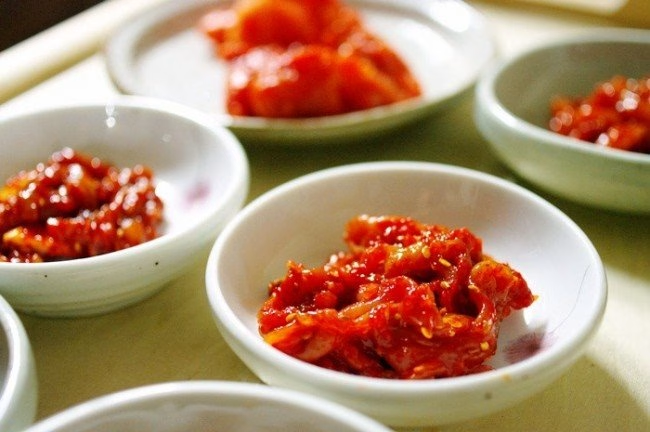
Have you ever tried Jeotgal (Fermented Seafood)? If not, you’re in for a treat! This traditional Korean dish brings an explosion of umami flavor that enhances any meal, especially when served alongside rice and vegetables. Originating from Korea, Jeotgal has been a staple for centuries, used not only as a condiment but also as a sign of culinary heritage, marrying the ocean’s bounty with time-honored fermentation methods. In this article, you will learn how to make Jeotgal (Fermented Seafood) at home, the ingredients you’ll need, and the variations you can explore. So, let’s dive into the salty, savory world of fermented seafood!
Ingredients
| Ingredient | Measurement | Description |
|---|---|---|
| Small shrimp | 500g | Freshly caught small shrimp are the perfect base for Jeotgal, providing a natural, briny flavor. |
| Salt | 200g | High-quality sea salt is essential for the fermentation process, enhancing the depth of flavor. |
| Fresh garlic | 10 cloves | Garlic not only adds aromatic depth but also has health benefits that elevate the dish. |
| Green onions | 2 stalks | These lend a refreshing crunch and color, balancing the strong flavors of the seafood. |
| Gochugaru (Korean chili flakes) | 2 tablespoons | For those who enjoy a little heat, gochugaru will bring a mild spice and vibrant color to your Jeotgal. |
These ingredients form the backbone of homemade Jeotgal (Fermented Seafood) and can be easily modified. You can experiment with different types of seafood or adjust the spice levels based on your taste. The best Jeotgal (Fermented Seafood) recipe is one that resonates with your palate!
Step-by-Step Instructions
- Step 1: Prepare the Ingredients – Start by rinsing your small shrimp under cold water to remove any impurities. It’s crucial for ensuring your Jeotgal (Fermented Seafood) has the freshest taste possible.
- Step 2: Mix the Ingredients – In a bowl, combine the cleaned shrimp, salt, chopped garlic, and gochugaru. Mix everything together well, ensuring that the shrimp are fully coated.
- Step 3: Pack the Mixture – Place the shrimp mixture into a clean, airtight jar. Press it down firmly to eliminate air pockets, which can interfere with the fermentation process.
- Step 4: Ferment – Allow the Jeotgal (Fermented Seafood) to ferment at room temperature for 2-3 days. After this initial fermentation, move it to the refrigerator, where it can continue to develop its flavors over the next few weeks.
- Step 5: Serve and Enjoy – Jeotgal can be served as a side dish or incorporated into soups and stews. Pair it with steamed rice for a delightful experience!
Pro Tips
- For a more complex flavor, consider adding other seafood like clams or fish.
- Make sure all your utensils and containers are sterilized to avoid unwanted bacteria during fermentation.
- Check the Jeotgal regularly during the fermentation process; the flavors should deepen and the shrimp will become more tender.
- Experiment with additional seasonings such as ginger or sesame oil for a unique twist on this classic dish.
Nutritional Information
| Nutrient | Amount per Serving |
|---|---|
| Calories | 150 |
| Protein | 20g |
| Carbs | 2g |
| Saturated Fats | 0.5g |
| Fiber | 0g |
| Cholesterol | 50mg |
| Sugars | 1g |
| Fat | 2g |
FAQs
What is the best way to store Jeotgal (Fermented Seafood)?
Store Jeotgal in an airtight container in the refrigerator. It can last for several months if kept properly.
Can Jeotgal (Fermented Seafood) be made vegan or gluten-free?
Yes! You can try using mushrooms or tofu as a base to create a plant-based version.
What are the best side dishes to serve with Jeotgal (Fermented Seafood)?
Jeotgal pairs wonderfully with steamed rice, pickled vegetables, or a fresh salad.
How long does it take to prepare Jeotgal (Fermented Seafood)?
Preparation takes about 20 minutes, but fermentation requires an additional 2-3 days.
Can I freeze Jeotgal (Fermented Seafood) for later?
While it’s not ideal, you can freeze it. Just make sure to thaw it in the refrigerator before consuming.
What variations of Jeotgal (Fermented Seafood) can I try?
You can use various seafood, like anchovies or fish, and adjust the spices to create unique flavors.
Is Jeotgal (Fermented Seafood) healthy?
Yes! It’s packed with protein and contains beneficial probiotics due to the fermentation process.
How can I incorporate Jeotgal (Fermented Seafood) into my meals?
Use Jeotgal as a condiment, mix it into rice dishes, or stir it into stews for added flavor.
Making Jeotgal (Fermented Seafood) at home opens up a flavorful world of Korean culinary tradition. It’s a simple yet rewarding process that allows you to incorporate unique flavors into your everyday meals. So, gather your ingredients, follow the steps, and enjoy the art of fermentation in your kitchen. Have you tried crafting your own Jeotgal? Share your experiences and any variations you create in the comments below!






